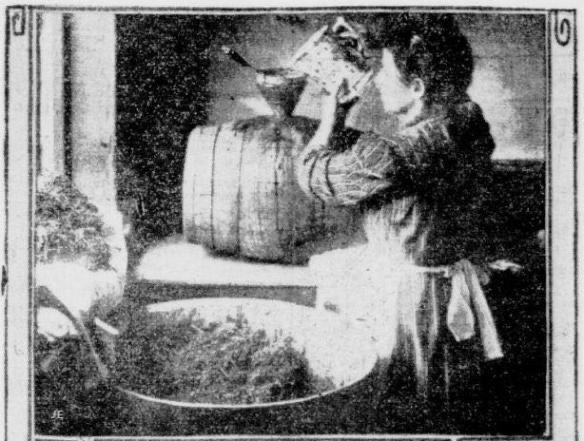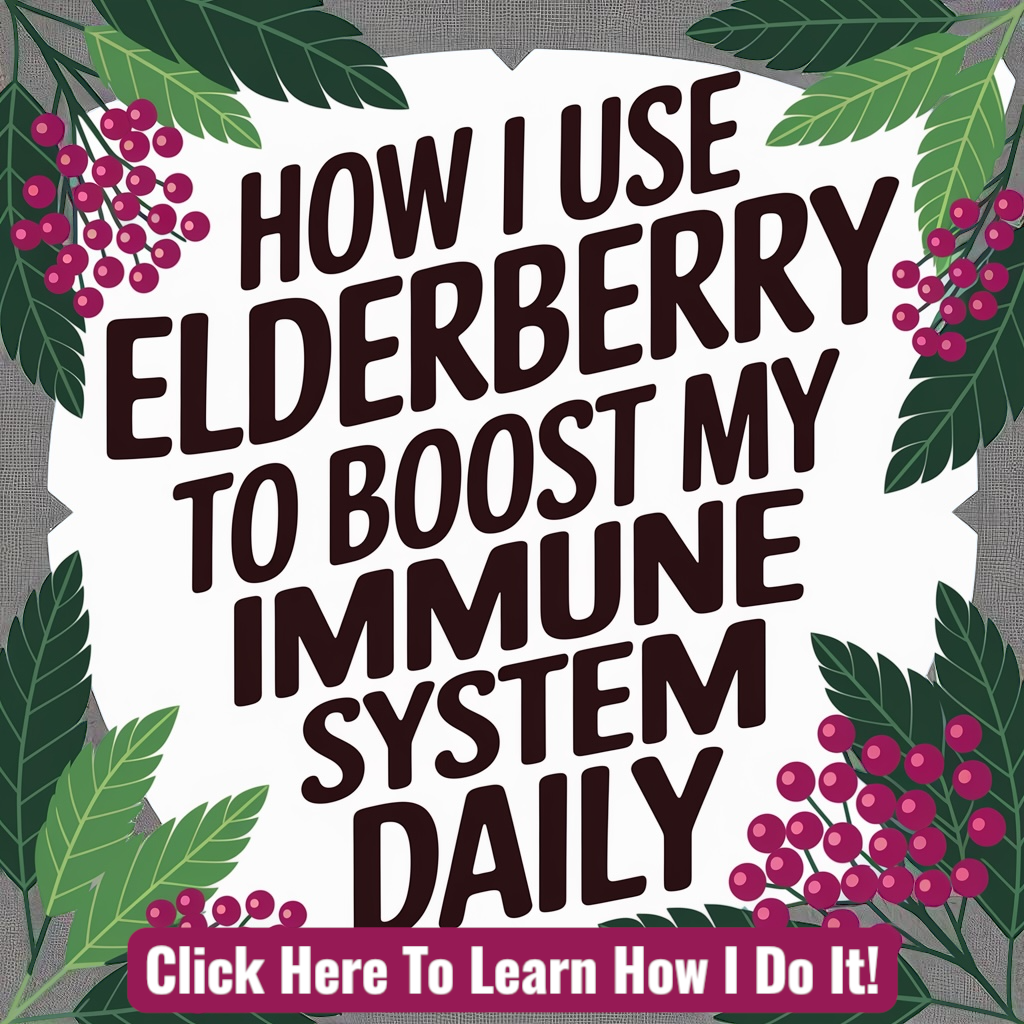
How Elderberries Were Used in the Past
I’ll never forget the moment I realized elderberries weren’t just a trendy superfood or a cute label on a syrup bottle. As I started digging into how elderberries were used in the past, I realized this tiny fruit had been trusted by generations—long before we had supplement aisles or “organic” stickers.
Elderberries have a history that’s honestly pretty wild. They’ve been brewed, boiled, fermented, crushed, and even respected spiritually in cultures around the world. They weren’t just used for colds or flu—people relied on them as part of their entire approach to wellness, community, and survival.
In this article, I want to walk you through how elderberries were used in the past across different cultures and time periods. From Native American traditions to European folk medicine, this little berry has seen it all. And the more I learned, the more I understood why elderberries are still such a powerful plant to this day.

Elderberries: One Plant, Many Cultures
If you think elderberries were only used in one part of the world, think again. These plants pop up in North America, Europe, North Africa, and even parts of Asia, and in nearly every region, people found a use for them—often without ever communicating across continents. That’s how powerful this plant is.
In some cultures, the elder tree itself was seen as sacred. In Europe, it was believed that spirits lived in the elder tree—cutting one down without permission could bring bad luck. Meanwhile, Native Americans saw it as a practical and medicinal plant used to treat a variety of ailments and even craft tools.
Whether people were treating fevers, cleansing wounds, making wine, or just trying to stay well during harsh winters, elderberry use spanned generations. And every time I learn about another traditional remedy or folk use, I realize how deep the respect for this plant really ran.
If you’re still learning what elderberries are and how to recognize them, you’ll definitely want to check out my beginner’s guide to identifying elderberries for all the physical characteristics of the plant itself.

Elderberry Use in Native American Medicine
When it comes to plant knowledge, Native American tribes were way ahead of the curve—and elderberries were part of that tradition.
Different tribes used elderberries in different ways, but some of the most common included:
- Berries for illness – Cooked into teas or infusions to treat fevers, colds, and flu symptoms
- Flowers for swelling – Used as a poultice or steeped for calming sore muscles or irritated skin
- Stems for tools – The hollow elderberry stems were sometimes turned into pipes, blowguns, and flutes
- Leaves and bark – Used externally (never ingested) in small amounts for things like bruises and swelling
What stands out to me the most is how this knowledge was passed down through oral tradition. These weren’t just home remedies—they were trusted practices, shared across generations without books or websites, and used because they worked.
And that’s something modern medicine is finally starting to circle back to: trusting the experience of those who came before us.

How Elderberries Were Used in Early European Folk Medicine
In Europe, the elderberry was basically seen as a natural pharmacy. People didn’t just use it casually—it was a go-to remedy passed from grandmothers to mothers to daughters (and many wise old men, too).
One of the coolest things I learned is that Hippocrates, the famous Greek physician, referred to the elder tree as his “medicine chest.” That’s how versatile it was.
In early European folk medicine, elderberries were commonly:
- Cooked into syrups or tonics to treat colds and coughs
- Made into cordials and wines believed to protect against illness
- Combined with herbs like mint or thyme for soothing teas
- Used in poultices for skin issues or swelling
- Paired with elderflowers for double the immune-boosting power
It was common to keep a bottle of elderberry cordial or wine in the house—not for fun, but for daily wellness and seasonal prevention. People respected it because it worked, plain and simple.
In fact, many of the same uses people swear by today—especially when it comes to immune support—can be traced right back to these early folk traditions. I talk more about how those traditional uses connect to what we now know in my full article on why elderberries are still so popular today.

Elderberry in the Middle Ages and Renaissance
By the time Europe reached the Middle Ages, elderberry wasn’t just part of medicine—it was woven into everyday life and superstition. Herbalists, midwives, monks, and even housewives all knew the value of this plant.
During this time, elderberries were:
- Fermented into wine and used as both a drink and remedy
- Cooked into thick syrups for treating fevers, chest congestion, and even plague symptoms
- Infused in oils and applied to joint pain or wounds
- Included in remedies for “melancholy” or imbalanced humors (yes, mental health support before it had a name)
Elderflowers also had a big role in spiritual and physical healing. They were thought to purify the air, protect homes, and even repel evil. You’d often find elder twigs hanging over doors or tucked into window frames—not as decoration, but as spiritual protection.
It’s wild to think people back then didn’t have microscopes or data—but they still knew elderberries helped. And their instinct to keep it close? Turns out, it was right all along.

Ancient Remedies Made with Elderberries
Before supplements, syrups, or even written recipes, people were already experimenting with elderberries in some pretty creative ways. Through trial and error, ancient communities figured out how to make the most of the plant—without knowing the science behind it.
Here are some traditional elderberry remedies that were used long before clinical studies existed:
- Boiled elderberries with honey – One of the earliest known forms of immune support (and still one of my favorites)
- Elderflower salves – Used for rashes, minor burns, and soothing irritated skin
- Bark decoctions – Occasionally used as a laxative or to treat swelling (though this was risky and is not recommended today)
- Fermented elderberry drinks – Believed to restore energy and strength, often served warm during the winter months
- Elderberry-infused vinegar – Used for sore throats and as a topical wash
What blows my mind is how many of these ancient preparations are nearly identical to what natural health folks use today. It’s proof that elderberry’s value wasn’t invented—it was simply rediscovered.

Why Elderberry Was So Widely Trusted in the Past
I’ve always believed that if people across time and cultures used the same plant for generations… there’s probably something to it. That’s exactly what happened with elderberry.
So why was it so widely trusted?
- It was accessible.
Elderberry bushes were easy to grow or forage, especially in temperate regions. You didn’t need money or a doctor—just the knowledge of when to harvest and how to prepare it. - It had real results.
People saw the difference when they used elderberries: fewer sick days, faster recoveries, and support during cold seasons. - It was multi-purpose.
You could use the berries, the flowers, the leaves (externally), and even the stems for tools. That kind of versatility was rare. - It became part of tradition.
Once something works well and safely for a community, it becomes part of that community’s knowledge. Elderberry wasn’t just trusted—it was respected.
This is a big reason I’m so passionate about elderberries today. The history isn’t just interesting—it’s a reminder that wellness doesn’t always have to come from a lab. Sometimes, it grows on a shrub behind the barn.

Elderberry Folklore and Legends
This is where things get a little magical—literally. Elderberries weren’t just seen as medicine… they were often viewed as spiritually powerful.
In old European folklore, the elder tree was believed to be inhabited by the Elder Mother, a protective spirit. You weren’t supposed to cut or burn elder wood without asking permission first, or misfortune might follow. Some even believed that elder trees could ward off witches, disease, or lightning strikes.
Here are a few of my favorite elderberry legends:
- “Never burn elderwood in the home” – said to bring death or bad luck
- Planting an elder by your front door – for protection and peace
- Elderflowers in the pillow – believed to enhance dreams and ward off nightmares
- Elderberry wine in ceremonies – used for strength, healing, or fertility blessings
I’ll admit—I don’t follow all the folklore, but I do plant elderberries with a certain amount of reverence. After learning how deeply this plant is rooted in both healing and legend, I can’t help but treat it with a little extra respect.

Elderberries in Early American Settler Remedies
When European settlers made their way to North America, they brought their elderberry knowledge with them—but they also learned from the Native Americans already here. The result was a blend of traditional European folk practices and Native herbal wisdom that helped people survive harsh winters and limited access to doctors.
In early America, elderberries were used in a bunch of creative and practical ways:
- Syrups made from wild-harvested berries were given to children during cold season
- Elderberry wine was brewed not just for enjoyment but for medicine—taken by the tablespoon, not the glass
- Tinctures and teas were common in settler kitchens, especially in rural areas far from towns
- Some mixed elderberry juice with vinegar or whiskey and called it a “daily tonic”
Midwives and community healers often passed down these remedies from one generation to the next, keeping the tradition alive. These early American uses mirrored much of what I cover in my guide to why elderberries became so widely talked about again, proving that none of this is new—just newly remembered.

Transition to Modern Medicine: What Got Lost
As industrial medicine took over in the 19th and 20th centuries, many traditional herbal practices—elderberry included—got labeled as “folk remedies.” Pharmacies began popping up, mass-produced pills replaced handmade syrups, and elderberries took a backseat to lab-created solutions.
Unfortunately, that shift came with a cost. We didn’t just stop using plants like elderberry—we started forgetting how to grow them, identify them, and pass down the knowledge. Even though elderberry had been trusted for centuries, it was suddenly “unproven” because it hadn’t been studied in a lab.
What’s crazy is that for decades, elderberries were seen as outdated—until people started turning back to natural solutions. That’s when elderberry slowly started to make its comeback.
I can’t tell you how many people I’ve talked to who say things like, “My grandma used to make elderberry syrup but I never paid attention.” The good news is, that knowledge is coming back—and fast.

Scientific Rediscovery of Elderberry Benefits
Now that natural remedies are getting a second look, science is finally catching up to what people already knew: elderberries work.
Modern studies have confirmed that elderberries:
- Shorten the duration of cold and flu symptoms
- Contain powerful antioxidants, including anthocyanins
- Support the immune system by reducing inflammation and viral replication
One of the most cited studies showed that people taking elderberry syrup during the flu recovered four days faster on average than those who didn’t. Another found that elderberry extract reduced cold symptoms in air travelers.
None of this surprises me anymore. After using elderberries in my own life, seeing the difference firsthand, and then watching researchers back it up—I’m convinced that modern science is just validating traditional wisdom.
This is also why I built Elderberry Pro—to bridge the gap between generations-old knowledge and everyday use. And if you’re still learning the basics, don’t miss the beginner’s guide on identifying and using elderberries.

Comparing Ancient vs. Modern Elderberry Use
One of the things that fascinates me most is how elderberry use has changed—but not disappeared. We’re still using the same plant, but the forms and delivery look totally different now than they did a few hundred years ago.
Here’s what I mean:
Back then, elderberries were:
- Cooked into syrup over an open fire
- Blended with honey, vinegar, or herbs from the garden
- Picked straight from the wild and used the same day
- Part of family traditions passed down by word of mouth
- Used alongside other herbs in homemade cold remedies or salves
Now, elderberries are:
- Processed into shelf-stable gummies, capsules, and tinctures
- Extracted in labs and bottled for mass consumption
- Available year-round thanks to commercial drying and packaging
- Backed by scientific studies and sold with dosage labels
- Searched for on Google instead of taught by Grandma
I still use modern elderberry products—I’m all about convenience when it makes sense—but knowing the traditional methods gives me a much deeper respect for the plant. And I truly believe we lose something when we forget the whybehind the wellness trends.
That’s why combining both—old-world knowledge and modern science—is where the real power lies.

What We Can Still Learn from Elderberry’s Past
Learning how elderberries were used in the past changed everything for me. Before, I just thought of it as a helpful syrup I grabbed off the shelf when flu season hit. But once I started seeing it as part of a much bigger story—one that spans centuries, cultures, and families—I started treating elderberry with more purpose.
Here’s what I think we can still learn today:
- Keep it simple. Elderberries don’t need to be overhyped or overprocessed to be helpful. Simple syrups, teas, or even dried berries are still incredibly effective.
- Prevention matters. People didn’t wait until they were sick—they used elderberry as a daily tonic to stay strong throughout the year. That mindset is powerful.
- Pass the knowledge down. Whether you’re teaching your kids how to make elderberry syrup or sharing info with a friend, keeping this wisdom alive matters.
- Trust nature—but stay smart. Our ancestors respected elderberry, but they also knew how to use it carefully. We should do the same.
It’s easy to get distracted by flashy supplements or trendy health hacks. But when you learn how elderberries were used traditionally—and see how much of it still holds up—it reminds you that sometimes, the best answers have been right in front of us all along.

Why Elderberry’s History Still Matters
So many modern remedies have short lifespans. They trend for a year or two, then fade out. Elderberry isn’t one of those. It’s stood the test of time—not because of branding or marketing, but because it works.
For me, learning how elderberries were used in the past helped me reconnect with the kind of wellness that feels grounded. The kind that doesn’t rely on trends or fads, but instead on real-life experience, tradition, and nature.
Whether you’re sipping elderflower tea, making homemade syrup, or just curious about how this plant became so popular, I hope you see elderberry now for what it really is: a plant with deep roots, lasting benefits, and a story that’s still being written.
If you’re new to elderberries and want to get a better feel for how they’re used today, check out my full article on why elderberries are trending again in natural wellness. And if you’re still figuring out what the plant looks like and how to identify it, don’t miss the beginner’s guide to spotting elderberries in the wild.
Thanks for reading—and thanks for helping keep elderberry’s legacy alive.
As an Amazon Associate we earn from qualifying purchases through some links in our articles.